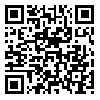Volume 21, Issue 63 (12-2021)
jgs 2021, 21(63): 19-37 |
Back to browse issues page
Download citation:
BibTeX | RIS | EndNote | Medlars | ProCite | Reference Manager | RefWorks
Send citation to:



BibTeX | RIS | EndNote | Medlars | ProCite | Reference Manager | RefWorks
Send citation to:
Seifi H. (2021). Estimation of snow cover through object-oriented techniques using image sensors OLI and TIRS (Case Study: Sabalan Mountain). jgs. 21(63), : 2 doi:10.52547/jgs.21.63.19
URL: http://jgs.khu.ac.ir/article-1-3226-en.html
URL: http://jgs.khu.ac.ir/article-1-3226-en.html
Master of Science, rs and gis, Tabriz University , sifihooshang@gmail.com
Abstract: (8641 Views)
It is very matter to study and measure snow covers as one of the important sources of water supply. Due to the hard physical conditions of mountainous environments, there is no possibility of snow measurement. the use of remote sensing with regard to low costs, up-to-date and extensive coverage in this field can be proven to be a good way to identify in snowflake areas. the main objective of this research is to estimate the surface coverage of Sabalan mountains using satellite images of OLI and TIRS sensors and using the object-oriented classification method. The classification of satellite digital images is one of the most important methods for extracting information, which is currently done with two pixel-based and object-oriented processing methods. The base pixel method is based on the classification of numerical values of images, and the new object-oriented method, which, in addition to numerical values, uses content, Texture, and Background information also in the image classification process. Therefore, in the present study based on the precision of the object-oriented classification, the object-oriented techniques were used to extract the surface of snow cover. In this study, due to the use of high resolution spatial resolution (Landsat 8) and the new method of classification of images, the snow surface was characterized by Normalized Difference Snow Index (NDSI), Normalized Difference Vegetation Index (NDVI), Land Surface Temperature (LST), Brightness with a total accuracy of 91 percent, to 2142.62 square kilometers for the range Sabalan mountains have been extracted and the results can be used as alternatives to snowflake stations.
Article number: 2
Send email to the article author
| Rights and permissions | |
 |
This work is licensed under a Creative Commons Attribution-NonCommercial 4.0 International License. |

This work is licensed under a Creative Commons — Attribution-NonCommercial 4.0 International (CC BY-NC 4.0)






